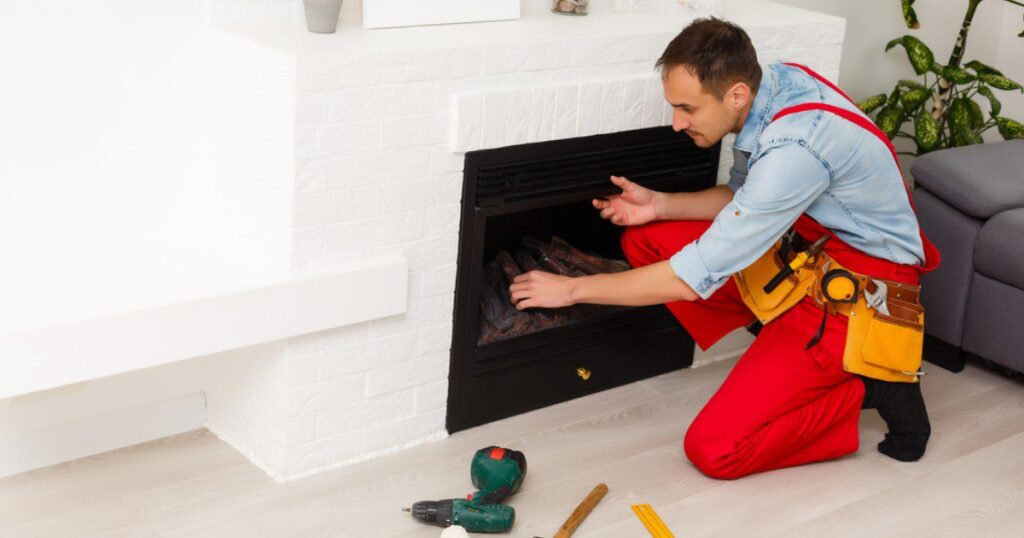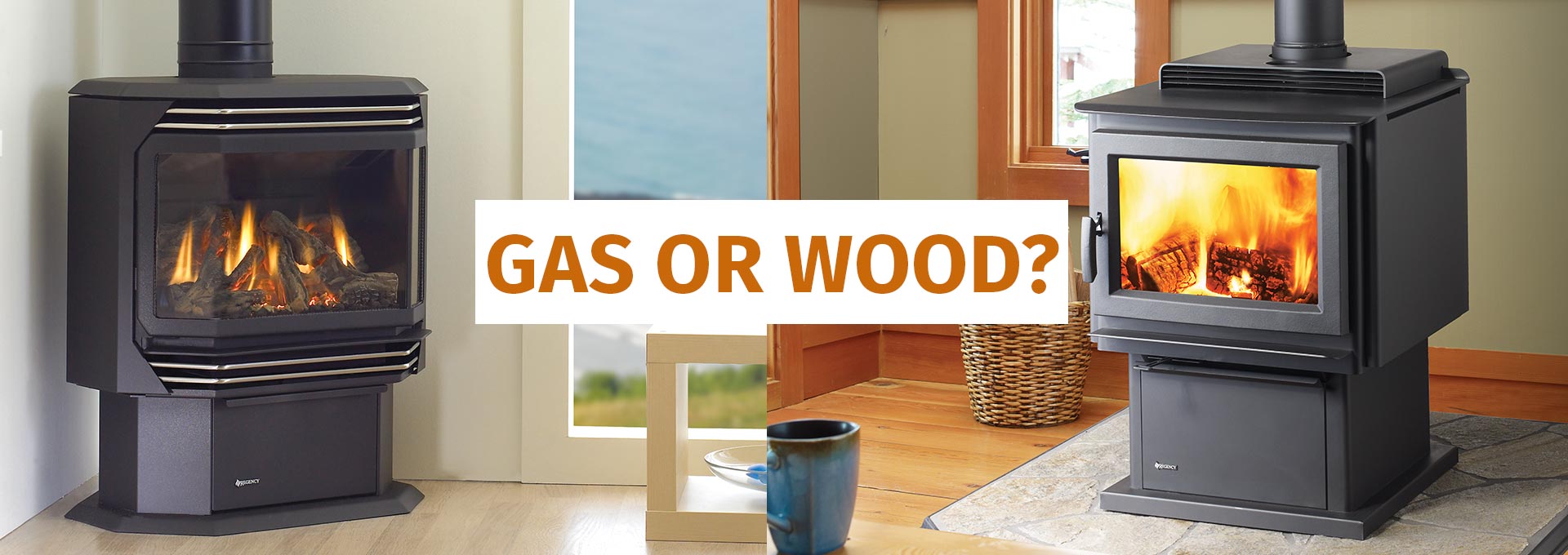Converting a wood-burning fireplace to a gas insert is a great way to update your home and make it more efficient. Gas fireplaces are cleaner, easier to use, and require virtually no time to start and stop the fire.
Installation of a gas insert is a straightforward conversion, with the major considerations being clearance to combustibles and a functional gas supply. The installation process involves running electrical power to the fireplace and installing a duplex receptacle, removing the existing chimney cap and damper from the top of the chimney.
Contents
Assessing Your Existing Fireplace

Before proceeding with the conversion, it’s important to conduct a thorough evaluation of your current wood-burning fireplace, chimney, and surrounding structure. Measure the dimensions of your fireplace to ensure compatibility with a gas insert.
Consider the depth, width, and height of the opening, as well as any architectural features that may impact the installation, such as mantels, protruding hearths, or decorative trim.
Additionally, inspect the condition of the chimney and flue. Check for any cracks, loose bricks, or signs of deterioration that could affect the safe operation of a gas insert. If there are existing issues with chimney drafting, such as downdrafts or smoke spillage, it’s advisable to address them before proceeding with the conversion.
Requirements: What You Need for the Conversion
Before you embark on this transformation, let’s go over the essential requirements for converting your wood-burning fireplace into a gas insert:
Examine Your Fireplace
Check the condition of your existing wood-burning fireplace, ensuring it’s structurally sound and suitable for a gas insert conversion. Take note of the dimensions and any unique features.
Gas Supply
Determine if you have a natural gas or propane supply available. This will dictate the type of gas insert you can install.
Professional Help
While it’s tempting to tackle this project yourself, it’s crucial to hire a certified professional for the installation. They have the expertise to ensure a safe and compliant conversion.
Design Options
Gas inserts come in a variety of styles, from traditional to contemporary. Consider how the insert will complement your existing décor and create the ambiance you desire.
Selecting the Right Gas Insert
- Choose between vented and vent-free gas inserts based on your needs and preferences.
- Consider the heating capacity of the gas insert to match the size of your living space.
- Select the flame appearance and firebed design that complements your home decor.
- Look for additional features such as remote control options or thermostatic control.
- Consult the manufacturer’s guidelines to determine the appropriate size for your fireplace.
- Factor in the efficiency rating and energy consumption of the gas insert.
- Review customer reviews and ratings to gauge the performance and reliability of the product.
- Seek advice from a reputable fireplace dealer or installer to find the best fit for your home.
- Compare warranties and after-sales support to ensure peace of mind with your purchase.
Converting the Fireplace: A Transformation in Motion

Once you have selected the appropriate gas insert, it’s time to start the installation process. It’s important to follow the manufacturer’s instructions and guidelines for your specific model, as installation methods can vary.
If you’re not confident in your abilities or unfamiliar with gas installations, it’s always best to hire a professional installer to ensure a safe and proper installation.
The installation typically involves the following steps:
#1: Preparation
Start by preparing your fireplace. Remove any existing debris, ashes, or remnants of the wood-burning system. Clean the interior and ensure there are no obstructions that could interfere with the gas insert installation.
#2: Shut Off Gas Line Connection
Shut off the gas line and disconnect any gas or electrical connections from the existing fireplace. If you’re not experienced in working with gas lines, it’s strongly recommended to hire a certified professional to handle this step. They will ensure the gas line is properly disconnected and capped off for safety.
#3: Positioning the Gas Insert
Carefully position the gas insert into the fireplace opening, following the manufacturer’s instructions. Make sure it is level and centered within the opening. Secure the insert using brackets or screws, as specified by the manufacturer.
#4: Enable Gas Line Connection
Connect the gas line to the gas insert according to the manufacturer’s instructions. This step requires precision and knowledge of gas connections. It’s best to have a professional handle this task to ensure a secure and leak-free connection.
#5: Venting
If you have opted for a vented gas insert, ensure the flue or chimney is properly connected to the gas insert’s venting system. This may involve installing a new liner or modifying the existing flue to accommodate the insert. It’s crucial to follow the manufacturer’s instructions and local codes for proper venting.
#6: Electrical Connection
If your gas insert requires electrical power, connect it to a dedicated electrical circuit according to the manufacturer’s instructions. This step may involve hiring a licensed electrician to ensure compliance with electrical codes.
#7: Test and Inspection
Once the installation is complete, conduct a thorough test of the gas insert to ensure proper functionality. Check for any gas leaks and perform a test run to ensure the flames are burning correctly and the heat output is as expected. Additionally, schedule an inspection by a qualified technician to verify that the installation meets safety.
Troubleshooting Common Issues
- If the pilot light goes out, follow the manufacturer’s instructions to relight it safely.
- Check for gas leaks using a soapy water solution; bubbles will form at the source of the leak.
- If you smell gas, turn off the gas supply immediately and contact a professional.
- If the flame appears irregular or discolored, clean the burner and ensure proper gas flow.
- For reduced heat output, check the gas pressure and consult a technician if needed.
- If the gas insert fails to ignite, verify the gas supply and pilot assembly for blockages.
- Address unusual noises or rattling by inspecting and securing loose components.
- Clean the glass regularly to maintain a clear view of the flames.
- For any complex issues or repairs, always seek the expertise of a certified technician.
Safety Precautions and Building Code
As with any heating system, safety should be a top priority. Here are some essential safety considerations:
- Adhere to local building codes and regulations for a safe and compliant installation.
- Ensure proper ventilation for the gas insert to remove combustion byproducts.
- Install carbon monoxide detectors nearby to detect potential gas leaks or emissions.
- Seek assistance from a certified professional for gas-related work to ensure safety.
- Test for gas leaks and perform a leak test before and after installation.
- Verify that the gas insert has adequate clearances from combustible materials.
- Avoid obstructing air intakes and ensure sufficient airflow for combustion.
- Follow the manufacturer’s instructions and guidelines for installation and usage.
- Schedule regular inspections and maintenance by a qualified technician.
Conclusion
Congratulations! You’re now equipped with the knowledge to convert your wood-burning fireplace into a gas insert—a step towards a cozier, more convenient home. Remember to evaluate your requirements, consult a professional, and select the perfect gas insert that suits your style and heating needs.

